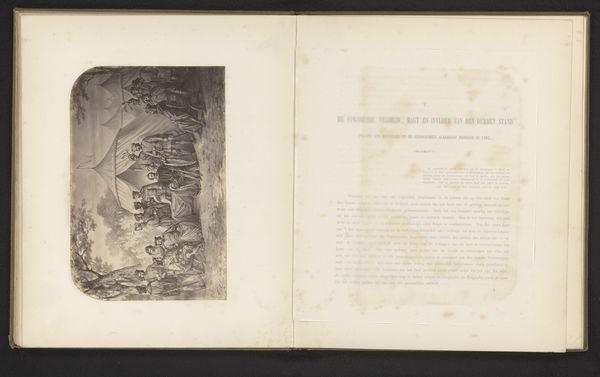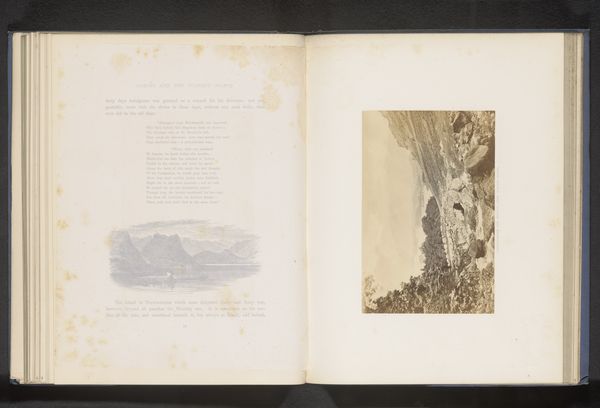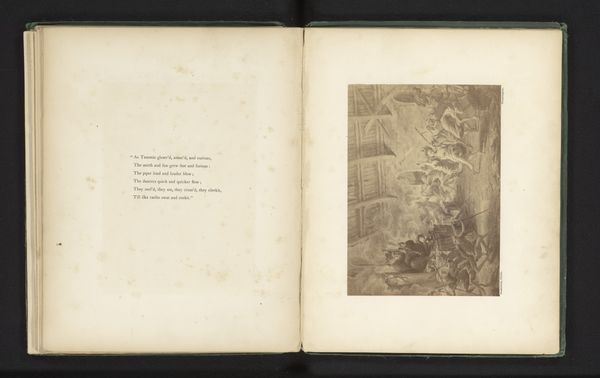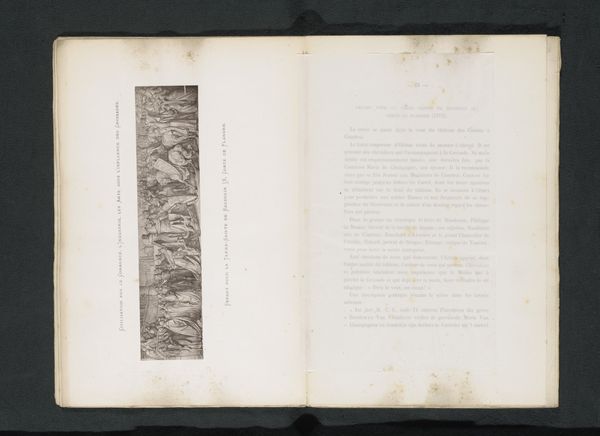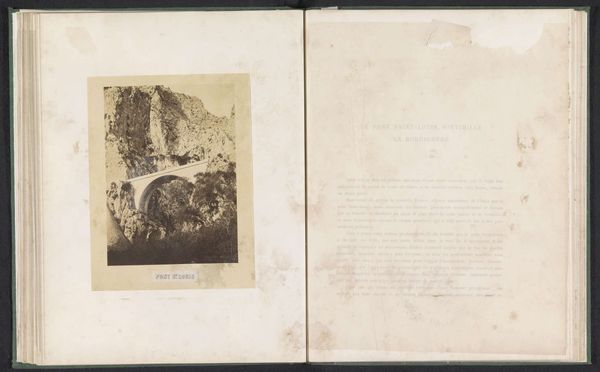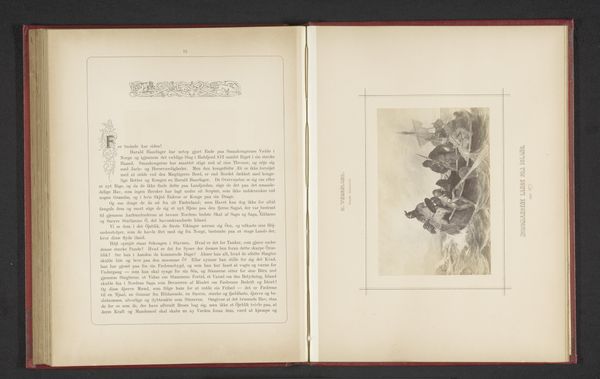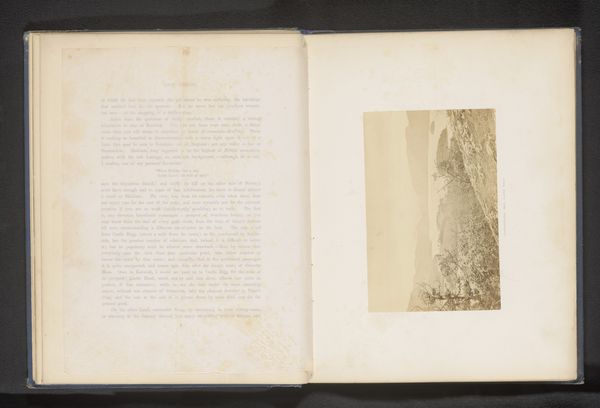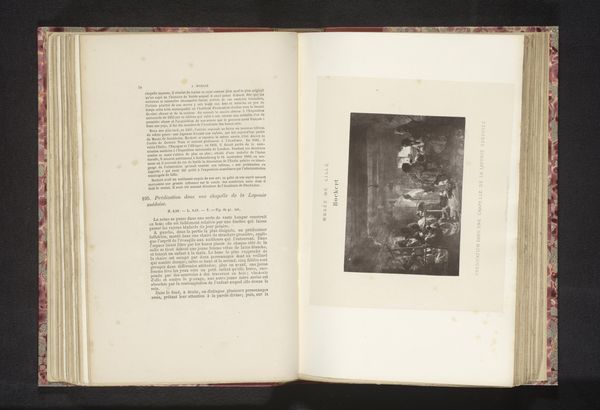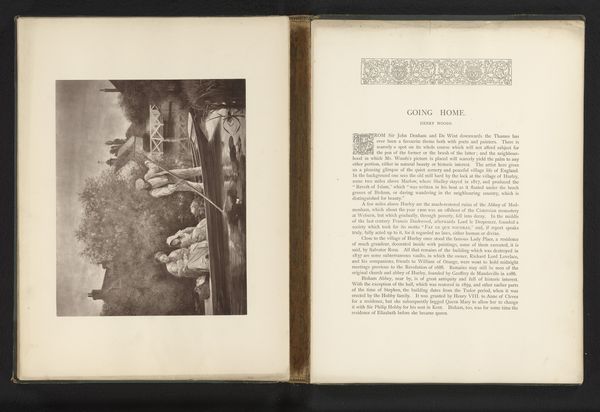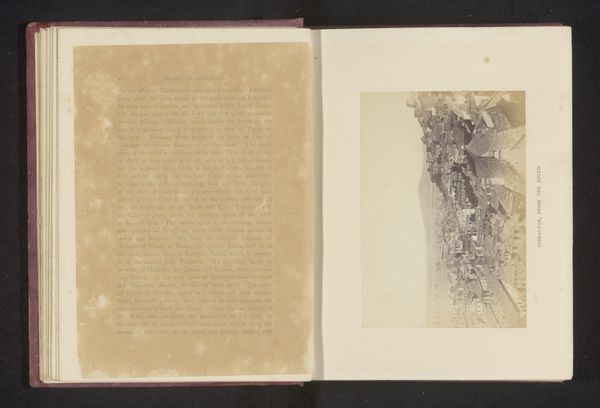
Fotoreproductie van een prent van Filips van Artevelde en de voornaamste Vlaamse burgers in 1382 before 1861
0:00
0:00
print, etching, paper, engraving
#
portrait
#
medieval
#
narrative-art
# print
#
etching
#
paper
#
history-painting
#
engraving
Dimensions: height 140 mm, width 211 mm
Copyright: Rijks Museum: Open Domain
Curator: This is a reproduction, an etching and engraving on paper dating to before 1861. It depicts Philip van Artevelde and the main Flemish citizens in 1382. I am drawn to how the image is contained on only one side of the open book form. Editor: I notice a certain solemnity, even stiffness in the posture of the figures. It feels like a constructed vision of historical significance rather than a spontaneous capturing of an event. Is that common in renderings like these? Curator: Well, as a historical print, its formal qualities emphasize a clear narrative. The use of line and shading, for instance, creates a sense of depth and hierarchy, drawing the eye to the central figures, particularly Philip, whose presence is so prominent. Editor: Indeed, Philip commands attention, his figure symbolizing authority within a political power dynamic where Flemish citizens engage in strategic deliberation. It provokes reflection: what strategies did marginalized peoples use to reclaim their voices during this time? Were their acts seen as 'heroic?' Curator: The artist employed a sophisticated layering of etched lines to portray the varied textures and garments, carefully rendering light and shadow to give each character volume. Editor: Precisely! Consider also that such images likely served a propaganda purpose, promoting a particular reading of history. In what ways did class relations and political agendas shape how the tale of Philip van Artevelde and his compatriots was visually recounted and spread through prints like these? Curator: Certainly, context is essential. The formal execution here elevates and idealizes historical actors. So this enhances not just their significance, but underscores themes of governance during an important period of change. Editor: Right. The careful design invites us to unpack both the details and grand narratives, considering not only who is represented but who is absent and whose perspectives are sidelined in the recorded historical accounts. Curator: Seeing its textures alongside an almost document-like open page begs further inspection of intent and meaning, beyond aesthetics and simple reportage. Editor: Agreed. It is a striking composition on many levels! The echoes of these moments call us to remember, reflect, and reimagine the historical landscape, now with added clarity.
Comments
No comments
Be the first to comment and join the conversation on the ultimate creative platform.
